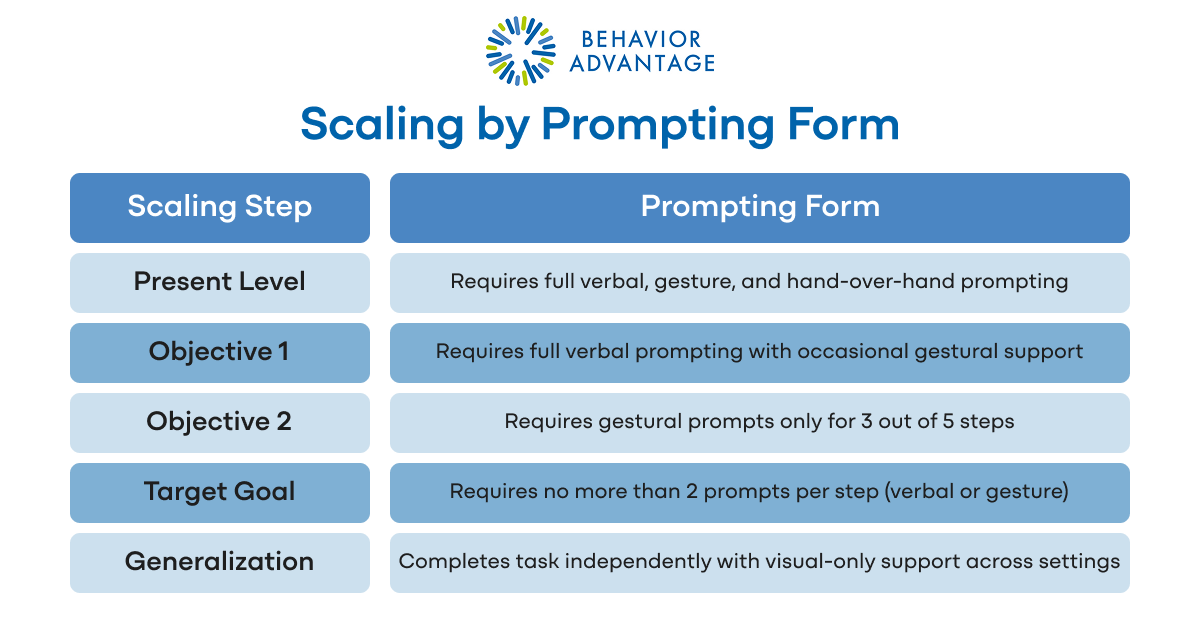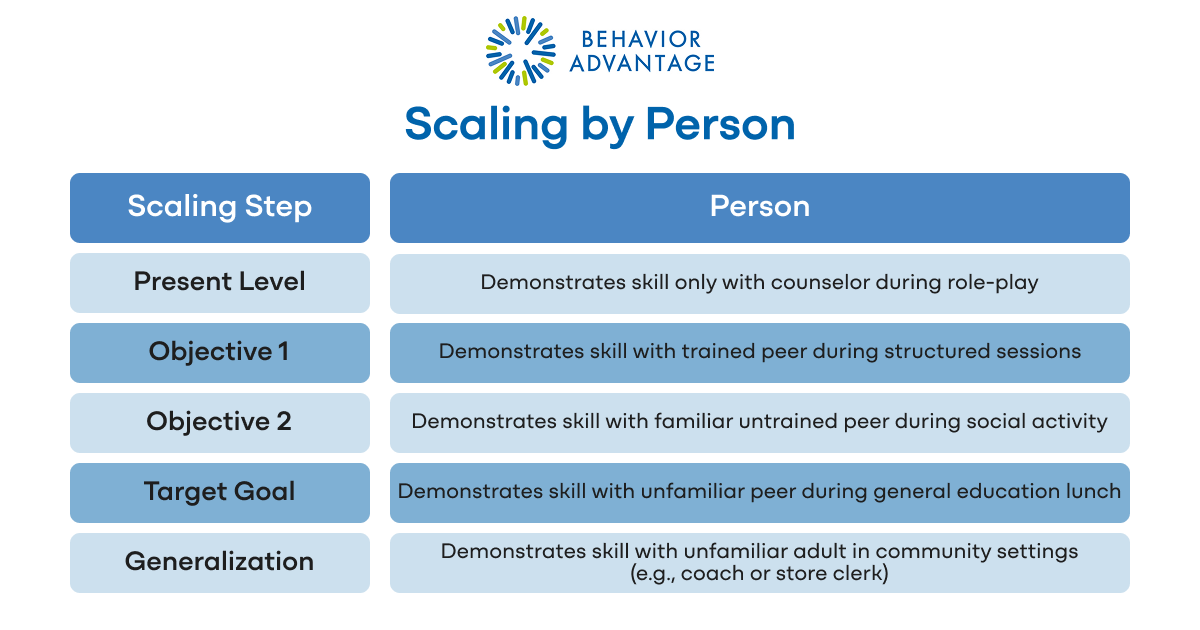We know strong behavior IEP goals are the foundation of effective behavior plans—but implementation is where the real change happens. That’s where Behavior Goal Scaling comes in. By thinking through how we expect a student to build a skill over time, and defining steps along the way, we give teams a practical framework for instruction, progress monitoring, and generalization.
Scaling Behavior Goals Across Different Dimensions
When writing and implementing behavior goals, teams can think about progress in terms of different scaling dimensions, such as:
- Skill Frequency – How often the behavior occurs
- Prompting Form – The level and type of support provided
- Context – The setting where the behavior occurs
- Person – With whom the student demonstrates the behavior
- Integrated – A combination of multiple dimensions, used together to build robust generalization
Let’s look at 5 Behavior IEP Goals Examples using this approach.
1. Scaling by Skill Frequency
Goal:
Reducing Off-Topic Questions
During a 45-minute class period, and given a visual cue system, the student will ask at least 2 on-topic questions and fewer than 2 off-topic questions in 4 out of 5 class periods per week, as tracked by the teacher on a simple tally form.

Goal Scaling Tips: Start by identifying common off-topic triggers. Teach and model question types. Use tally systems or sticky notes to reinforce progress, then fade supports as independence increases.
2. Scaling by Prompting Form
Goal:
Completing Vocational Tasks with Fewer Prompts
During vocational instruction within the classroom, given a posted task analysis and verbal instructions, the student will complete a 5-step routine with no more than 2 staff prompts per step across 3 consecutive instructional days, documented using a vocational task tracking form.

Goal Scaling Tips: Begin with errorless teaching and high reinforcement. Use least-to-most prompting. Build routines into visual schedules and reinforce completion with natural consequences (e.g., job is done).
3. Scaling by Context
Goal:
Requesting Breaks Appropriately
When presented with a non-preferred academic task during math class, and given a break card or visual support, the student will request a 5-minute break using respectful communication and return to their assigned seat within 6 minutes in 4 out of 5 opportunities, as documented by the teacher.

Goal Scaling Tips: Identify the best time and place to start (e.g., low-stress subject). Teach break request steps explicitly. Role-play transitions and debrief use of the strategy.
If you are looking for more ideas, our IEP Goal Bank offers excellent advice on where to start!
4. Scaling by Person
Goal:
Responding to Peer Initiation
During structured social time with peer support and visual cue cards, when a peer initiates a conversation, the student will respond appropriately and ask a follow-up question in 80% of opportunities across 3 consecutive days.

Goal Scaling Tips: Use video modeling and role-play with trusted adults. Practice with peers who know how to prompt gently. Expand to unstructured settings when readiness is observed.
5. Integrated Scaling (Best Practices in Functional Communication Training)
Goal:
Using a Voice Output Device to Communicate Needs
During structured activities in the SDC classroom, and with access to a voice output device and staff proximity support, the student will request a want or need using the device with no more than 2 verbal or gestural prompts, at least twice per day on 4 out of 5 days.

Goal Scaling Tips: Follow a prompt hierarchy (physical → gesture → visual → independent). Use communication temptations to create natural opportunities. Generalize across settings using PECS-style practice (Phase 1–4) with built-in reinforcement and error correction.
For more tips about IEP goals, explore our IEP Goal Bank.
Final Thoughts
Each of these examples shows how Behavior Goal Scaling transforms a single Behavior IEP goal into a pathway for learning, consistency, and real-world success. By taking the time to define what progress looks like, teams create a system of support that helps students—and educators—see, celebrate, and sustain behavior change.
These scaling examples also powerfully complement the development of individualized Behavior Intervention Plans (BIPs). They help teams align goals with function-based strategies, build consistent responses across staff, and focus on shaping and teaching replacement behaviors in a way that is developmentally appropriate, realistic, and sustainable. When used together, Behavior Goal Scaling and BIPs form a cohesive, student-centered approach to intervention that supports progress across both instruction and behavior.
At Behavior Advantage we specialize in providing teams with expert advice on how to use these tools.











